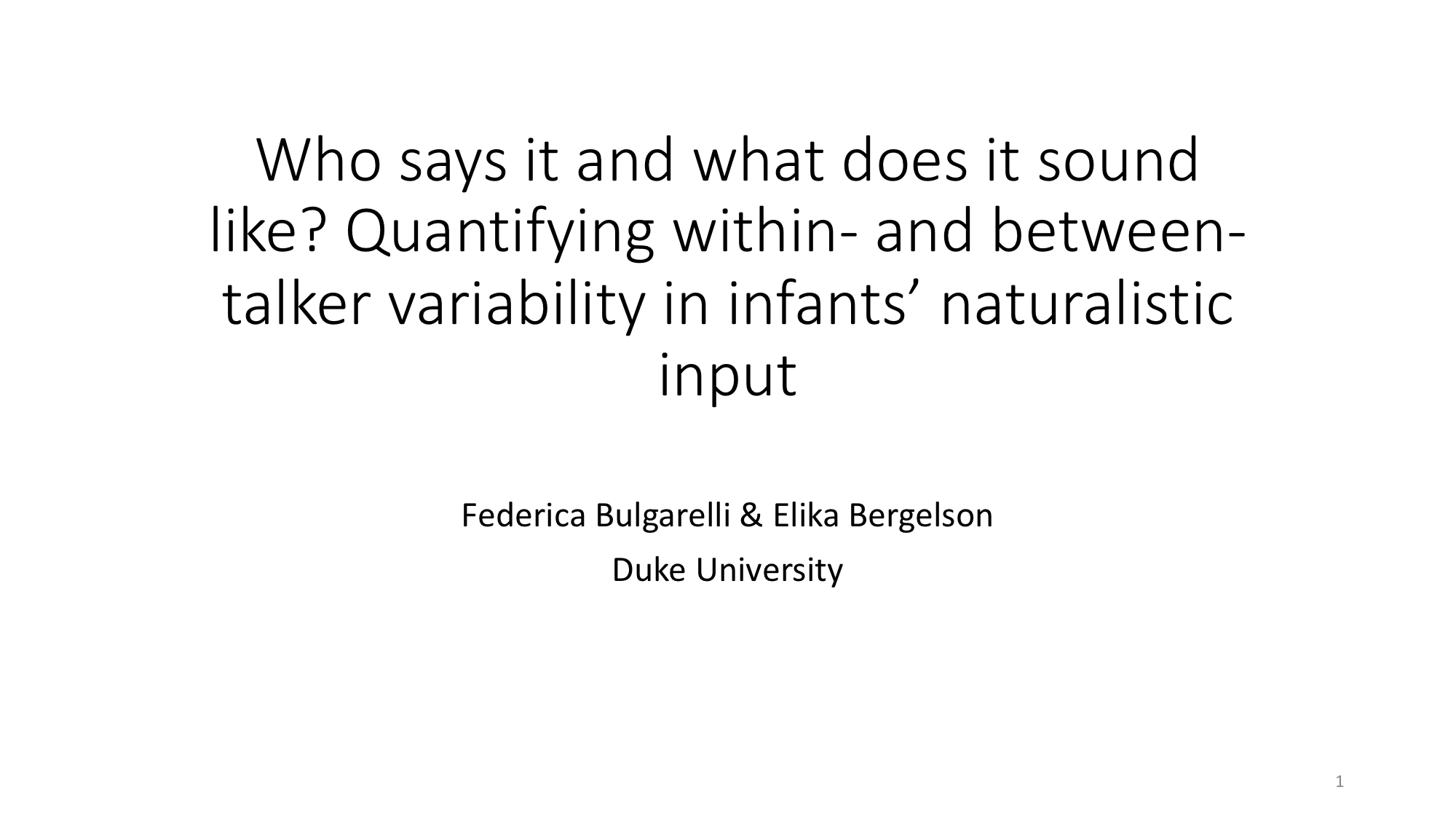Who says it and what does it sound like?
Quantifying within- and between- talker variability
in infants’ naturalistic input
Bulgarelli & Bergelson (2019)
Presented at BUCLD 2019 in Boston, MA
Abstract
Words sound slightly different each time they are said, both by the same talker and across talkers. Rather than hurting learning, lab studies suggest that between- and withintalker variability helps infants learn minimal-pairs. To set the stage for linking naturally-occurring variability to vocabulary and word production, we quantified acoustic variability in the SEEDLingS corpus by measuring well-established acoustic properties on all tokens of the top concrete nouns (e.g. ball). These measurements reveal that both between- and within- talker variability is readily available in infants’ input, in similar ways to the variability measured in lab stimuli. Further, while between-talker variability is related to the number of talkers in the input, within-talker variability is not related to number of talkers, proportion of the input from the top talker, or tokencount. Next steps will link naturally-occurring variability ‘in the wild’ to vocabulary and word production.
